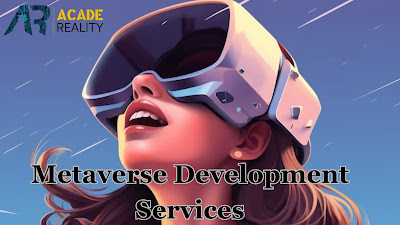The future of Virtual reality in education
Using new technologies for educational purposes is more than just a fashion. It is rapidly imposing itself as the future of education. In fact, most experts working in education and training are now well-versed in different fields, such as blended learning, eLearning, virtual reality, and augmented reality.
Though still quite costly to implement, there is every aim to believe that high-tech classrooms will continue to develop and costs will come down quickly. To get there, though, the Internet giants – Google, Facebook, Microsoft, and Apple– are investing enormously in VR education services, which could strongly modify the way we approach education and training.
The prospect of virtual reality in education
1. Experience through training
Incorporating new technologies in training is part of a wider movement to help students gain experience. The aim is clear: trial educational techniques to develop a more experimental way of learning.
Of course, this notion has been around for some time. The so-called learning-by-doing method is the forbearer of realistic learning. Information can be learned from books…but the experience cannot. Learning the basics is one thing; relating them to academic situations is another - applying them to actual life circumstances is harder still.
Experiential learning aims to help learners apply information and to create a capability during the training session. Certainly, virtual reality in education enables learners to come into contact with a more vibrant representation of reality than a standard case study.
Situational learning, or dynamic role play, could increase teaching by requiring learners to problem-solve in an immersive environment. One in which the values of each act could be verified on a trial-and-error basis.
Preserving students’ attention is related to another pedagogical goal. Here, the experiential and immersive aspect of learning could allow students to encode info via different learning channels.
Learners think, test, and see their knowledge and ideas immediately. The goal is to move closer to actual-life work situations, which include an emotional piece that is often missing from the standard learning context.
Also, these new tools enable beginners to engage in highly specific conditions because they do not come with the same cost and time constraints. For example, learners could switch from one environment to the next (conflict with a customer, fundraising initiative, etc.) without having to get out of their chairs.
The other essential element is the fact that using new expertise reduces the risk related to errors in an actual-life situation. Clearly, the positive and negative concerns of virtual reality games, as genuine as they may be, are only digital. Therefore, consumers can test and try new strategies in a risk-free setting.
2. Gamification in education
Learners have grown up with video games where challenges, levels, tasks, and immediate feedback are the rules. Those rules are complete with rankings, competition, rewards, and interaction with other gamers.
When they were kids, they had the impression that school was more unexciting than playing with their groups. Gamification is the ideal way to retain and attract our students’ attention in a virtual or real classroom.
The technologies that are accessible today offer a wide range of prospects to engage and motivate our students and, above all, to help them become dynamic learners. Gamification is also a trial for the tutors since it is not just about games. We have to know learner skills and their behavior, and we have to set the learning objectives in a more standard approach. The content has to be there; technology and gamification are just new ways to deliver it.
3. Custom-designed training
Immersion is an excellent learning opportunity, but another benefit of virtual reality in education is the fact that they can be tailored. The advantages of customized teaching to individual students are well-established; however, applying bespoke solutions remains demanding.
Instructors are already pulled in many diverse directions. Customization is often limited to a group-by-group base. How can educators adapt their course to people when there are 40 learners in each class? Different technologies could make this type of customization possible while growing class sizes on a massive scale.
In addition, the growth of each student could be restrained, enabling learners to learn at their pace. The avenues in terms of customization are several: it could be likely to match teaching methods with learning styles even when class sizes are overwhelming. Performance following of this sort could allow instructors to adjust learning speeds and teaching techniques on the fly.
Wrapping up
New technologies provide a variety of benefits, but it would be foolish to see them as a remedy to all our problems, and the woes they raise should be dealt with head-on.
The primary is linked to the risk that immersion could considerably reduce interaction between people, mainly between students. Networking with another human being is far more inspiring than interrelating with an avatar.
Similarly, interactions with a screen will never durably replace real interactions. Student-teacher interaction must be maintained at all costs. A balance must be found between tech-delivered content and regular classroom teaching.
The other restraint is related to the price of these resources. Indeed, universities need substantial WIFI and IT infrastructure to support the real-time use of these bandwidth-hungry tools.
Finally, capitalizing in these different technologies (even though costs are dropping fast) is monetarily onerous for education organizations and training.




Comments
Post a Comment